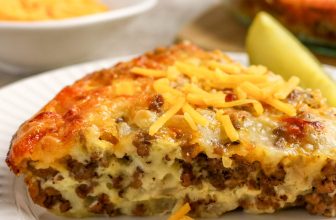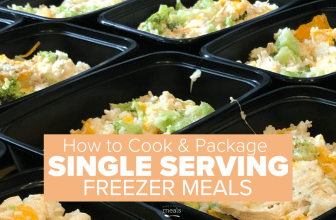
This homemade Potato casserole is a creamy comforting side dish perfect for any meal. It’s a classic favorite that can be easily customized to suit various tastes and features creamy, cheesy potatoes perfect for family dinner and special gatherings! It is so easy to make and is all made from scratch – no canned soup or hacks – just potatoes and a homemade cheesy cream sauce.
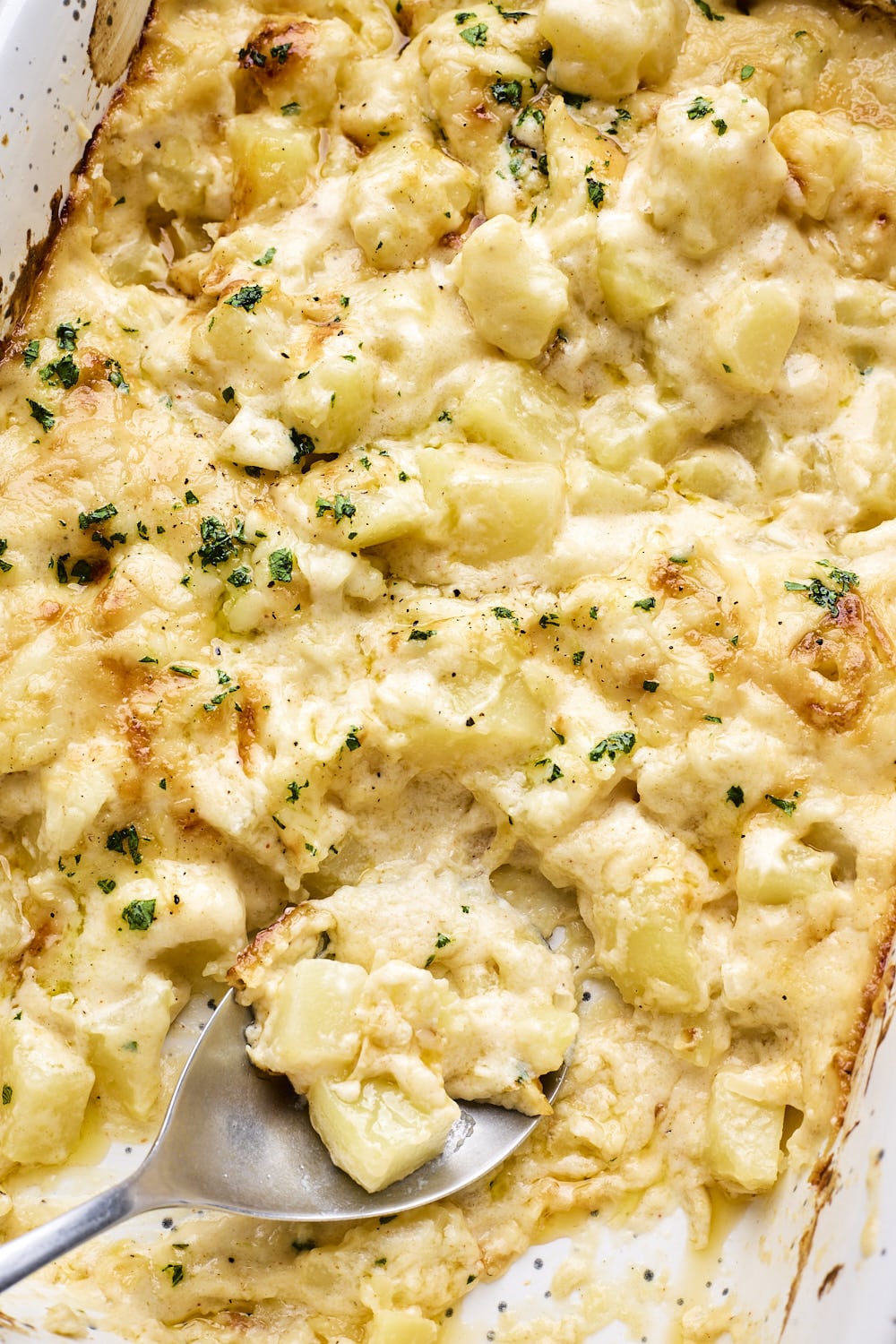
Potato Casserole Recipe Ingredients
- POTATOES: This recipe can be made with any variety of potatoes. Use either russet, yellow, or red potatoes. I prefer to peel the potatoes for this recipe. Because you are boiling them to fork tender the outcome will mostly be the same. There are some variations though. I prefer to use Yukon gold potatoes as opposed to russet. Russet potatoes have a high starch and low moisture content, which gives them a fluffy texture, but they tend to fall apart when boiled. Yukon Gold potatoes have a medium starch and higher moisture content, giving them a denser, creamier, and buttery texture that holds its shape well even when fork tender. This is why I prefer them in this dish – because you want creaminess but you still wants the potatoes so hold a bit of their shape. Both work – it just boils down to your personal preference (pun intended).
- BUTTER: I use unsalted butter
- SHALLOT: Shallots add nice flavor to the cheese sauce. Feel free to use red onion instead just use half of a small one.
- GARLIC: Use as much or as little garlic as you like. If you prefer to use granulated garlic you can.
- FLOUR: ¼ cup of all purpose flour is what I use for this recipe to create the base or the roux for the cheese sauce. Feel free to use a gluten free flour if you prefer.
- MILK: I use whole milk for the cheese sauce for best flavor and richness.
- CREAM: Heavy whipping cream or half and half cream is what I use for the cheese sauce for extra creaminess.
- CHEESE: I usually use a blend of white cheddar cheese and gruyere cheese. You can use any cheese or cheese combinations you like Parmesan, Cheddar and Parmesan, Colby Jack, Smoked Gouda, Monterey Jack, etc. I like to shred my own if I can and avoid the pre shredded packaged cheese that contains anti-caking agents that can affect the sauce’s texture. A note about the cheese: using a milder cheddar cheese can help make potatoes less greasy. Aged or sharp cheddars tend to release more oil when melted, while younger, milder cheeses are less prone to this separation.
- OPTIONAL ADD INS: I love to add in some protein like shredded or cubed cooked chicken or cubed ham or cooked and crumbled bacon. For extra flavour in the sauce you can add a splash of w sauce or spoon for of dijon mustard. You can even add fresh herbs to the sauce like thyme or rosemary of you would like a more herby cheese sauce.
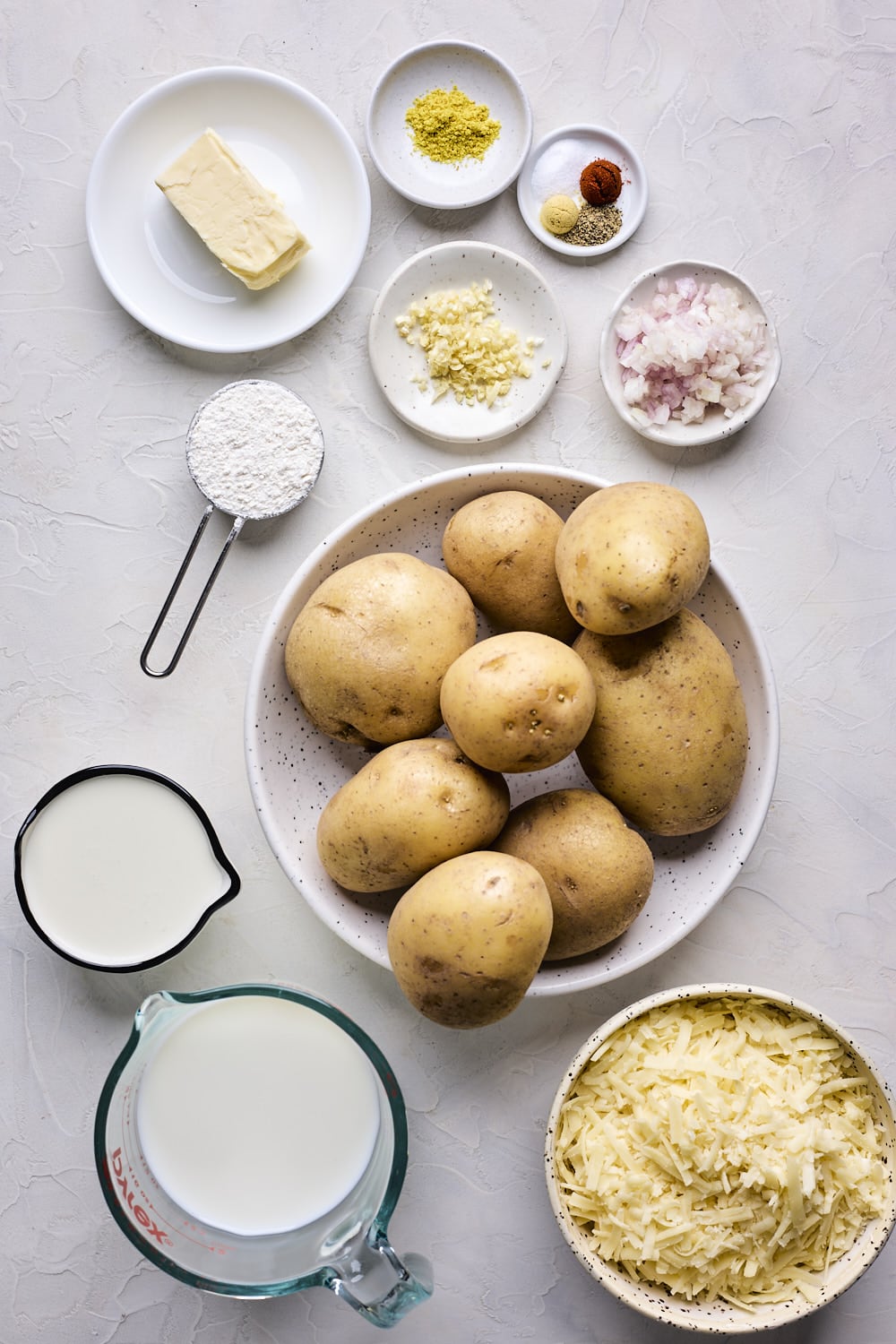
Can I Add A Crunchy Topping?
You totally can! For a crunchy topping, combine 1½ cups cornflakes, slightly crushed, with 4 tablespoons of melted butter. Top casserole before baking. Or skip the butter and just top the casserole with 1 – 1½ cups crushed potato chips over the cheese.

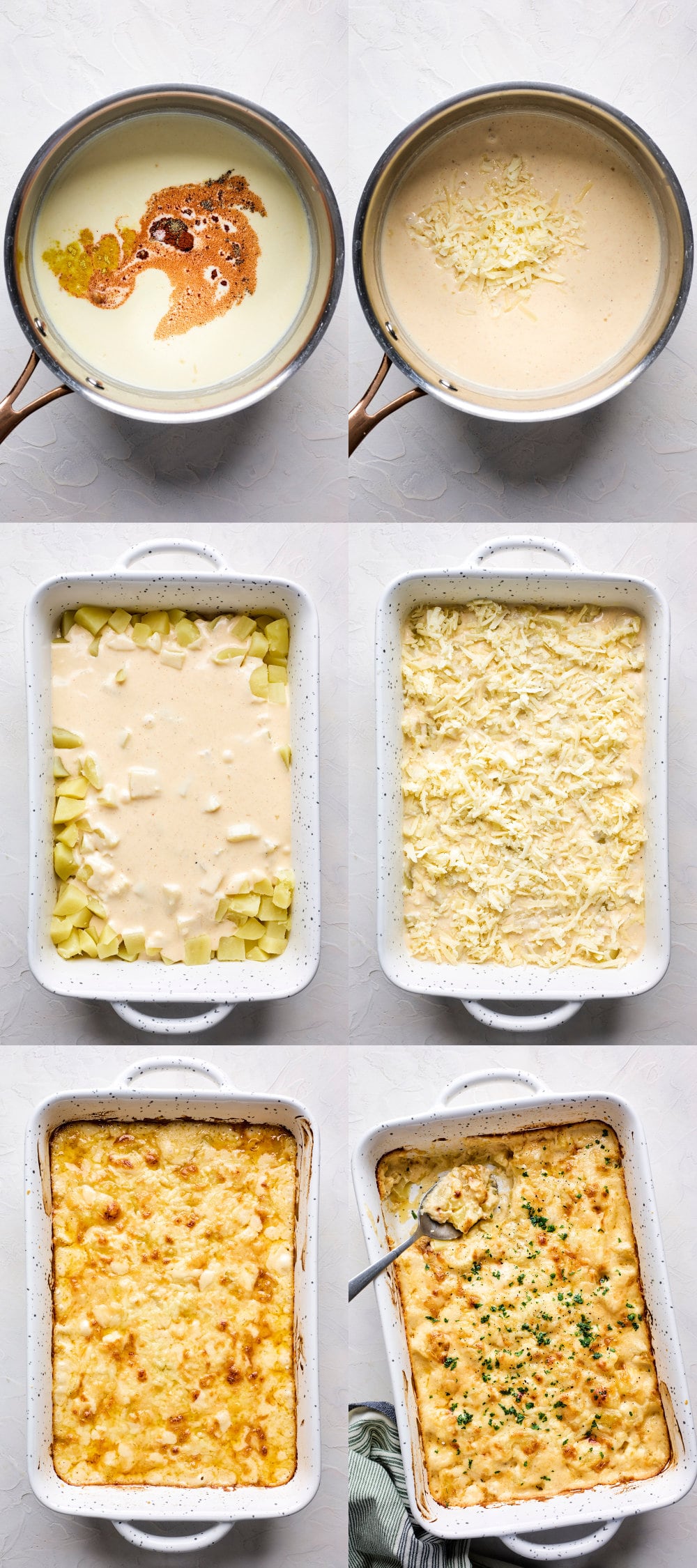
How To Make Cheesy Potato Casserole
- Boil & Drain Potatoes: You want to boil them until fork tender.
- Make Cheese Sauce: Start but sautéing aromatics, making a roux by adding the flour followed by the milk, cream and cheese
- Combine Sauce & Potatoes: Gently toss potatoes and sauce in prepared dish
- Bake & Enjoy: Top potatoes with remaining cheese and bake until bubbling and lightly golden. Garnish with fresh chives or herbs. Dig in while they are warm!

Storage, Make Ahead & Reheating Potato Casserole
- STORAGE: Place any leftover potato casserole in an airtight storage container in the refrigerator for up to about 3-5 days.
- MAKE AHEAD: Assemble casserole and store it, covered, in the fridge until you’re ready to bake it. Let the casserole come to room temperature before baking as per recipe instructions. OR make ahead the whole dish 1 day before and reheat. Bake the casserole. Let it cool completely and then store in the fridge. When you’re ready to serve it, remove from fridge and let the casserole come to room temperature and then heat it in the oven at 325ºF for about 15 minutes, or until warmed through.
- RE HEATING: You can reheat this dish in the microwave and heat for 30 second intervals until it’s warm. You can also reheat in the oven.
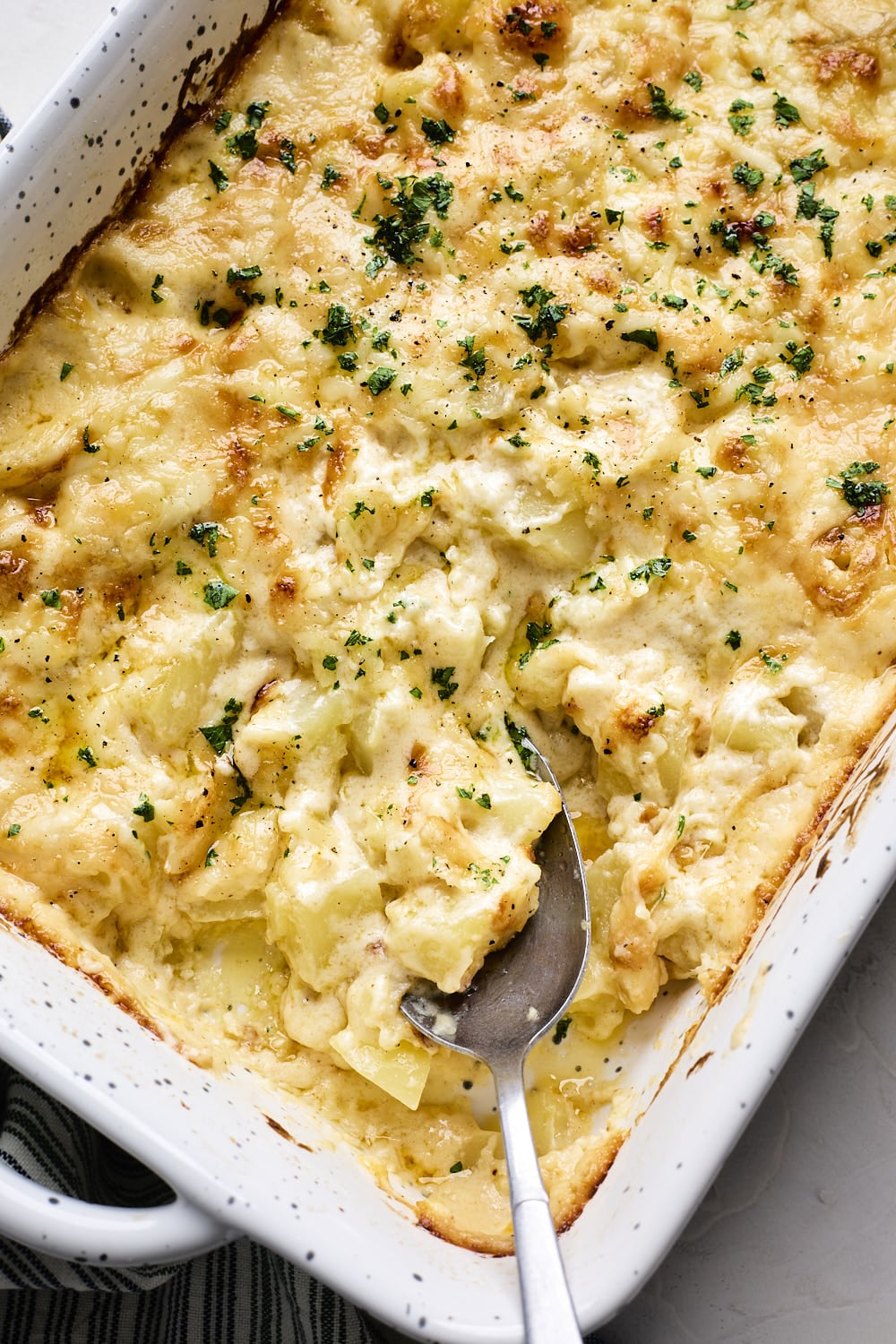
More Recipes You Will Love:




